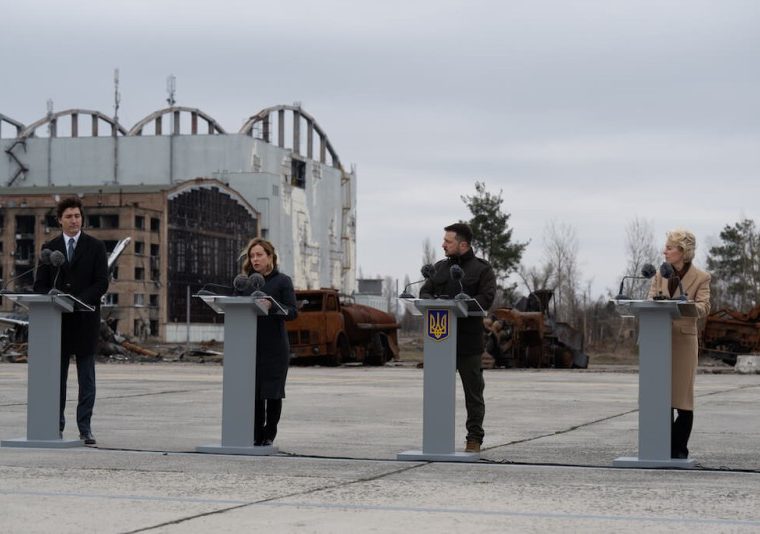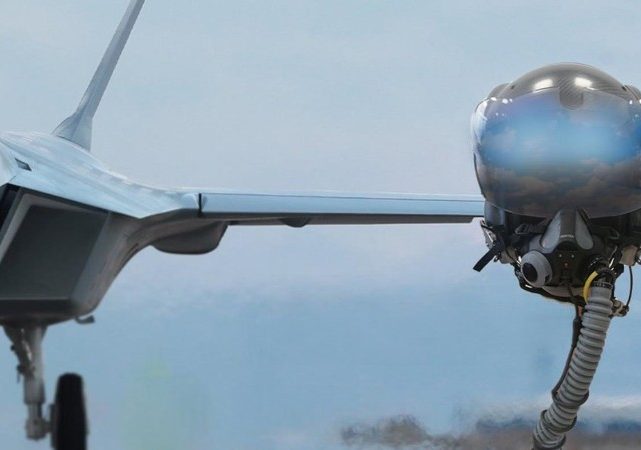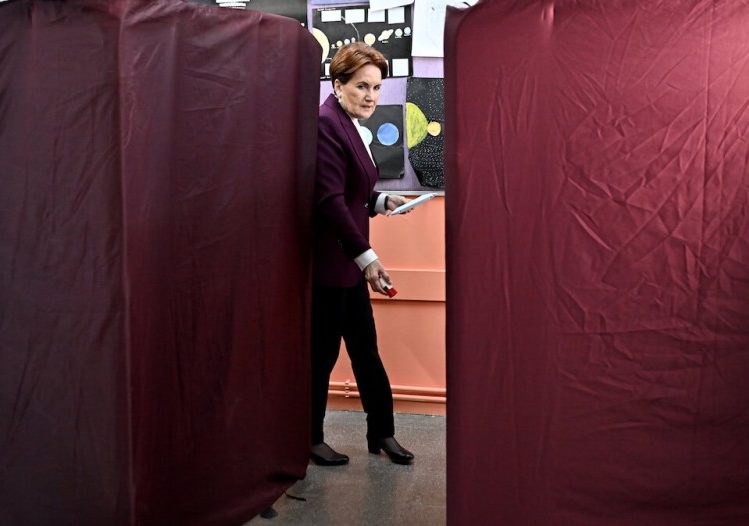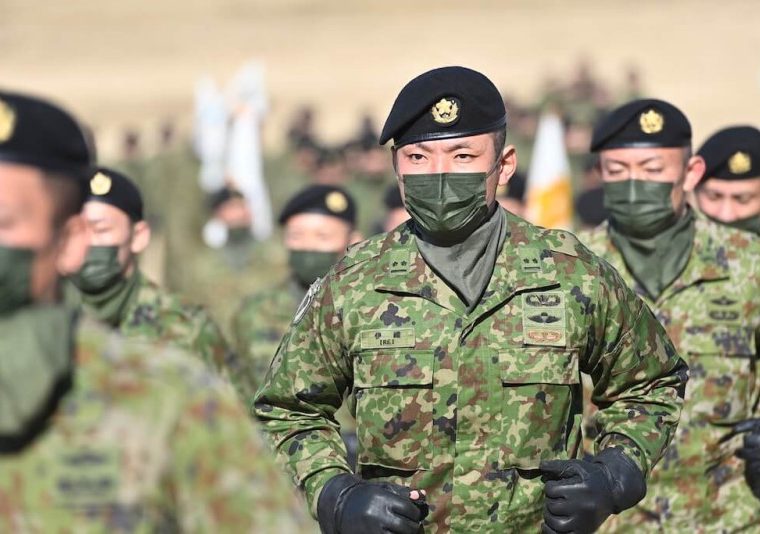L
ibya has not been on the international political agenda since the start of the Russia-Ukraine war as much as it was in the prewar period, yet recent major developments in the country have the capacity to influence both local Libyan and international actors involved in Libya. In fact, the protracted military and political developments in Libya have been triggered by the vacuum created by this relative decline in “international interest.”
With the end of the post of Stephanie Williams, the dominant leader of the UN Support Mission in Libya (UNSMIL), the Libyan Political Dialogue Forum (LPDF) and, more generally, the political transition process has been left “unattended.” In this vacuum, the power struggle among Libyan actors escalated, military conflicts erupted occasionally, and the atmosphere of relative stability brought about by the political transition became extremely fragile.
With the disengagement of the UNSMIL, regional actors, especially Egypt, gained a lot of room for maneuver, and through their influence over certain Libyan actors, they were able to shape the political developments in the country and even attempted to redesign the political arena. These attempts naturally deepened the existing fault lines between Libyan actors and made conflicts inevitable.
When Aguila Saleh, the speaker of the Tobruk-based House of Representatives, announced that he withdrew his vote of confidence from the Tripoli-based Government of National Unity (GNU)—effectively acting on behalf of parliament—and when the Government of National Accord (GNA) appointed Interior Minister Fathi Bashagha as prime minister to form the the Government of National Stability; when Khaled al-Mishri, the head of the Tripoli-based Supreme State Council (SCC), initiated a series of negotiations to establish a legal basis for the elections—effectively taking over the political transition process—and when Mishri and Abdul Hamid al-Dbeibeh dismantled the GNA and attempted to form a new “unity government,” they all found Cairo as a strong supporter and benefactor.
Cairo’s activism in the western (Tripoli) region, taking advantage of the vacuum, was met with reactions and counter-mobilizations from Western regional actors, and periodic waves of instability in Libya. For a long time, Libya has been unable to achieve internal instability due to the influence of external actors. Important political and military developments in its periphery and on its borders seem destined to add fuel to the fire in a country struggling to gain internal unity, reach a political solution, and overcome its fragmented structure.
The Fezzan equation in the region
Although Fezzan, one of Libya’s three main geographical regions, has a much more modest role in influencing Libya’s destiny compared to the eastern (Barka) and western (Tripoli) regions, it constitutes a small African component of the country. Arab identity, as an extension of the Gaddafi regime, is, of course, a phenomenon that encompasses the whole of Libya, but this identity is somewhat more “diluted” in Fezzan compared to other regions. This is certainly due to Fezzan’s geographical, demographic, social, and cultural proximity and strong links with Libya’s African neighbors.
In the period after Gaddafi’s ouster, the borders, due to the disappearance of the state mechanism and the fragmented military and political structure, have become even more uncontrolled and porous. While completely controlling all of Libya’s borders is impossible both in terms of length and the difficulties inherent in desert regions, the southern border of Libya is the least controlled of all. The situation of Fezzan’s border with Chad and Niger has natural, humanitarian, man-made and criminal dimensions.
The social contact between the northern regions of Chad and Niger and Fezzan through tribal and kinship ties constitutes the natural and human aspect of uncontrolled borders. On the other hand, smuggling is the main economic activity in these border regions due to their largely desert nature and the sparseness of population density and settlements. In other words, in addition to natural social ties and interactions, economic and illicit activities and interactions are also very strong.
This strong bond and interaction between Chad, Niger, and Fezzan brings with it the possibility that in the event of a crisis, instability can easily spill over from one to the other. The Chadian FACT (Front for Change and Concord in Chad) rebels, recruited to fight on Haftar’s side and finding a safe haven in the Fezzan region, have used Fezzan as a springboard to attack the Chadian border periodically, fight the Chadian army, and were even blamed for the death of Chad’s former president Idriss Déby as a result of one of these attacks.
In response to FACT rebel incursions into the border region, the Chadian army has occasionally entered Libya’s Fezzan region and bombed FACT rebels. Due to Libya’s large surface area, these conflicts, which take place at a great distance from the capital Tripoli, do not occupy the country’s agenda much since Tripoli does not have de facto control over these distances. However, if the conflicts grow and spread, it is clear that the instability of Fezzan will be added to the priority issues that occupy the country’s agenda.
Meanwhile although the consequences of the recent coup in Niger are uncertain, it constitutes an area of risk that could export instability to Libya via Fezzan. Even when Libya’s southern neighbors Chad and Niger were stable and there was no active crisis, illegal migrants from these countries and almost every country in Africa were already using Libya as a destination and transit country to Europe. In the event of a destabilization or conflict in Chad and Niger, the problem of illegal migration, which Libya has been unable to cope with for years, will emerge on a much larger scale, and Libya’s current weak state capacity will be even more incapacitated than it is today.
Libya’s African connection and its potential to be affected by Africa’s “problems” are not limited to the fact that it neighbors Chad and Niger via the Fezzan region. The positioning of Libya in the envisioning and geopolitical projections of the country by the external actors which have been involved in Libya also connects Libya to Africa. France, the most prominent of the European countries involved in Libya and so far the most decisive actor in the dynamics of the crisis, has strongly supported Haftar in many respects, and not only because it shares Haftar’s revolutionary and anti-“Islamist” ideological stance.
France’s goal of maintaining its presence and influence in the Sahel region, in general, and Operation Barkhane, in particular, has led to its interest and active intervention in Libya, which by virtue of its geographical and demographic elements is a natural part of this region, In fact, France’s perception of Turkey’s presence in Libya as having a potential impact beyond Libya, for example in North Africa in general or in the Sahel region, is behind France’s sharp anti-Turkey moves in its Libya policy.
Likewise, for Russia, another of the most influential external actors involved in Libya, Libya functions as an important part of its more macro-level African designs. The Wagner mercenary army, which is the mediator of Russian influence and presence in many African countries, has also been Russia’s choice in Libya. The regions where the Wagner mercenary army, which is estimated to number around 2,000 today, is engaged, deployed, and operating on Libyan soil show that Russia attaches particular importance to the “Africa-facing” side of Libya and makes its operational investments there.
In short, Libya is inevitably becoming part of Africa, not only because of the strong land connection of its southern Fezzan region with Sahel countries like Chad and Niger, but also because of the policies pursued by influential external actors. The juntas in Burkina Faso, Mali, and now Niger are notable for their anti-French and pro-Russian rhetoric. If the series of coups in the Sahel turns into an active struggle for influence between France and Russia, the countries of the Sahel region will be destabilized.
With the death of Yevgeny Prigozhin, the Wagner mercenary army’s head, Russia’s African network is entering a transition period. The importance of Libya within this African network was demonstrated when Russian Deputy Defense Minister Yunus-bek Yevkurov made his first visit to Libya on the day of Prigozhin’s death. Both the possible instability of the Sahel countries and Wagner’s active physical presence in the Fezzan region increase the risk of Libya being affected by the power struggle and instability of this region in the coming period.
Recommended





